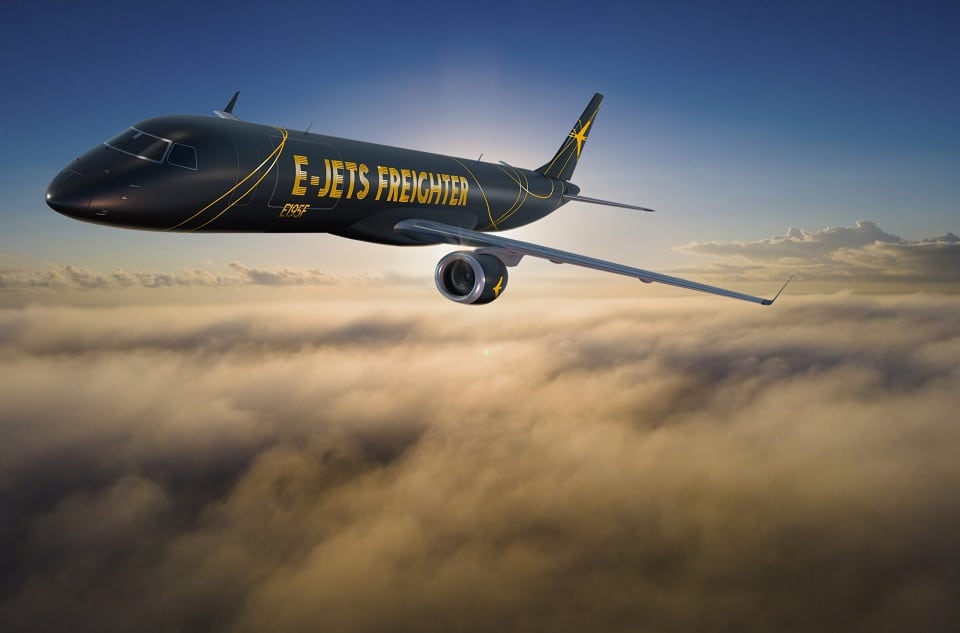Aviation
Embraer launches freighter conversion programme

Embraer has launched a new freighter program where the passengers aircraft can be converted into cargo.
In response to the high demand for the e commerce and increased demand for cargo capacity. it is benefitting to the smaller markets. we have developed to convert pre owned E190 and E195 from passenger jets to freighter. The First deliveries are planned for 2024.
When it come for converting the passengers aircraft to cargo. the only seat were removed but in the Embraer e jets freighter have structural modifications. over head bins are removed, there are new smoke detection and fire suppression system, the main deck floor is reinforced and has a cargo handling system, there is a new forward cargo door as well.
The E-Jet freighters offer greater frequency and better operating economics in smaller markets than larger aircraft.
How much can our E-Jets freighters carry? Combining under-floor bulk cargo and main deck ULD or pallet capacity, the weights and volumes are impressive:
The E 190 F variant aircraft can carry 7 ULD in main and lowed deck . it has capacity to hold 3,632 cubic feet and in term of weight it can hold up to 23,608 kg.
The E195 F variant aircraft can carry 8 ULD’s in Main deck and lower deck. It has capacity to hold 4,171 kg and the in term of weight it can hold up to 27,112 kg.
FAA mandatory Rules for Instagram Pilots Footage
The range and payload capacity of the E 195F is similar to the B 737 dash 300 SF yet The E 195F burns less fuel, Generates Fewer emission, and has lower maintenance and cash operating costs.
Cathay Pacific becomes second operator of the A350-1000 widebody
Our E-Jet freighter conversion program is another example of an innovative solution to an emerging market opportunity. They are, in fact, bringing the concept of right-sizing to the cargo industry by tapping the gap between turboprop and larger narrow body freighters.

Aviation
Boeing, Antonov to Collaborate on Defense Projects

– MOU represents Boeing’s commitment to work with Ukrainian industry
– Includes exploring opportunities for collaborating on in-country support of Unmanned Aerial Systems
A Memorandum of Understanding was signed today by Boeing and Antonov Company to investigate potential collaboration on defense-related projects.
“We’re happy to keep collaborating with the Antonov Company to help Ukraine’s economic development and expansion,” stated Ted Colbert, CEO and president of Boeing Defence, Space, & Security.
Airbus and the Antonov An-225: The Best Partnership:Click here
“This agreement demonstrates our ongoing efforts to find more opportunities to work with Ukrainian industry, which was underscored by our signing of the Ukrainian Defence Industry Compact earlier this year.”
The areas of potential collaboration identified in the agreement consist of training, logistical support and overhaul services for tactical Unmanned Aerial Systems utilized by the Ukrainian Armed Forces, which includes the ScanEagle. In addition, the companies will also explore opportunities for Antonov to provide engineering support to Boeing.
The six largest cargo aircraft ever built in the aviation industry:Click here
“A strong, innovative, and efficient defense industry is key to sustainable economic development and national security, and we are extremely excited to collaborate with Boeing,” said Ievhen Gavrylov, CEO of Antonov Company.
This agreement brings a whole new level of opportunity to implement the latest and most effective solutions – in addition to the possibility of future projects with Boeing in the aerospace and defense industry.”
-

 Travel1 week ago
Travel1 week agoAir India to Expand US Operations with Three New Routes After a Decade
-

 Travel2 weeks ago
Travel2 weeks agoWhy We Should Avoid These Stamps in a Passport
-

 Airlines1 month ago
Airlines1 month agoInvestigations Reveal Fake Chinese Titanium in Boeing and Airbus Jets
-

 Tech4 weeks ago
Tech4 weeks agoChina’s CATL Plans 1,800-Mile Electric Plane Launch by 2027
-

 Airport3 days ago
Airport3 days agoTop 10 Largest Airports in the World by Size
-

 Aerospace4 weeks ago
Aerospace4 weeks agoChina’s Fighter Jets Turn Wings into Autonomous Drones
-

 Airlines4 days ago
Airlines4 days agoAir India Rolls Out A350s for Delhi-New York JFK and Newark Routes
-

 Defence3 weeks ago
Defence3 weeks agoBoeing Enhances Chinook with New Engines and Block II Upgrades at $96 Million







